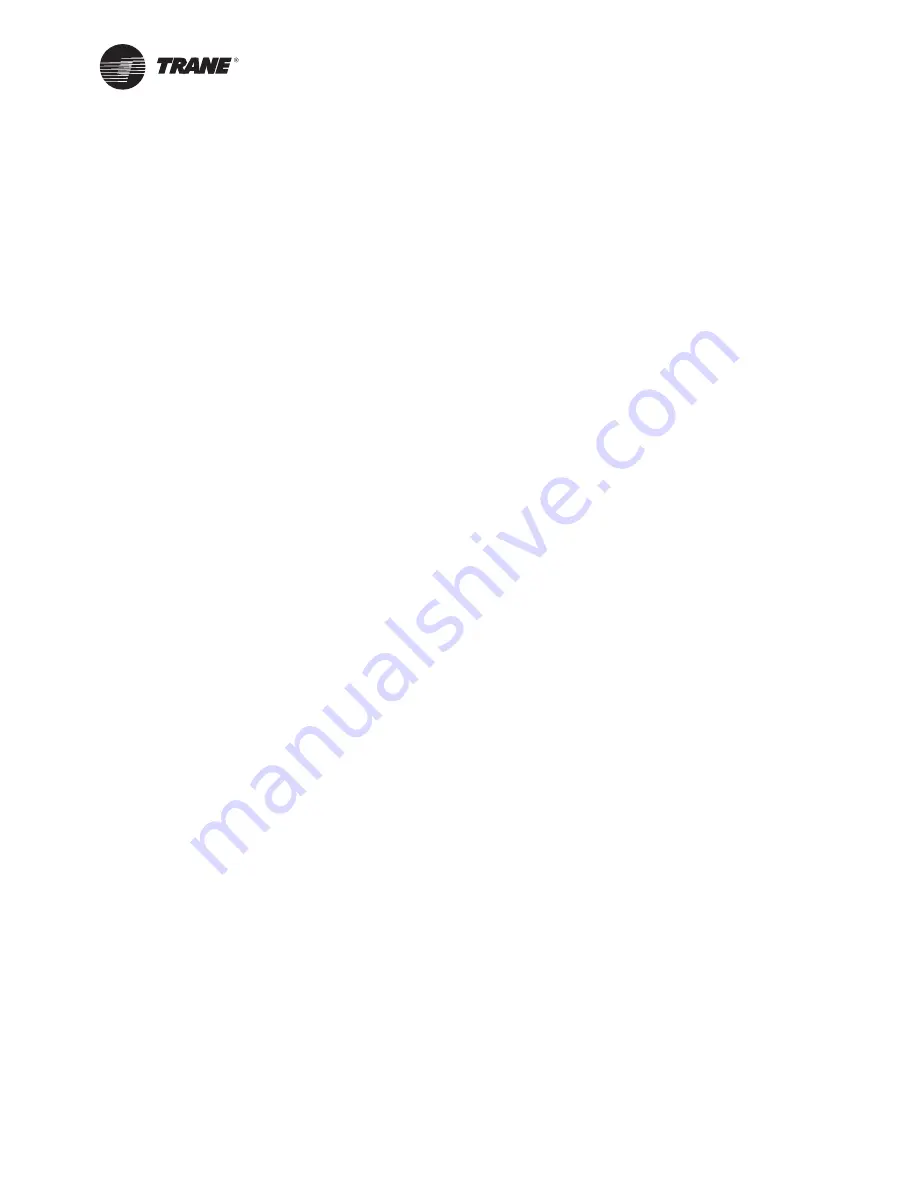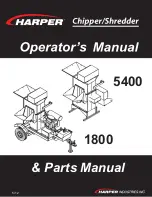
RLC-SVX14H-GB
24
Thoroughly fl ush all water piping to the RTWD/RTUD
unit before making the fi nal piping connections to
the unit. Components and layout will vary slightly,
depending on the location of connections and the water
source.
CAUTION Evaporator Damage!
The chilled water connections to the evaporator are
to be grooved-pipe type connections. Do not attempt
to weld these connections, as the heat generated
from welding can cause microscopic and macroscopic
fractures on the cast iron water boxes that can lead to
premature failure of the water box. To prevent damage
to chilled water components, do not allow evaporator
pressure (maximum working pressure) to exceed 10 bar.
CAUTION Equipment Damage!
If using an acidic commercial fl ushing solution,
construct a temporary bypass around the unit to prevent
damage to internal components of the evaporator.
CAUTION Proper Water Treatment!
The use of untreated or improperly treated water in a
Chiller may result in scaling, erosion, corrosion, algae or
slime. It is recommended that the services of a qualifi ed
water treatment specialist be engaged to determine
what water treatment, if any, is required. Trane assumes
no responsibility for equipment failures which result
from untreated or improperly treated water, or saline or
brackish water.
CAUTION Use Piping Strainers!
To prevent evaporator or condenser damage, pipe
strainers must be installed in the water supplies to
protect components from water born debris. Trane is
not responsible for equipment-only-damage caused by
water born debris.
Drainage
Locate the unit near a large capacity drain for water
vessel drain-down during shutdown or repair.
Condensers and evaporators are provided with drain
connections. Refer to “Water Piping.” All local and
national codes apply. A vent is provided on the top of
the evaporator at the return end. Be sure to provide
additional vents at high points in the piping to bleed
air from the chilled water system. Install necessary
pressure gauges to monitor the entering and leaving
chilled water pressures. Provide shutoff valves in lines
to the gauges to isolate them from the system when
they are not in use. Use rubber vibration eliminators to
prevent vibration transmission through the water lines.
If desired, install thermometers in the lines to monitor
entering and leaving water temperatures. Install a
balancing valve in the leaving water line to control water
fl ow balance. Install shutoff valves on both the entering
and leaving water lines so that the evaporator can be
isolated for service. A pipe strainer must be installed in
the entering water line to prevent water-borne debris
from entering the evaporator.
Reversing Water Boxes
Water boxes on the evaporator and condenser can NOT
be rotated or swapped end for end. Altering the water
boxes will lead to poor effi ciency, poor oil management
and possible freeze-up of the evaporator.
Evaporator Piping Components
“Piping components” include all devices and controls
used to provide proper water system operation and unit
operating safety. These components and their general
locations are given below.
Entering Chilled Water Piping - fi eld installed
•
Air vents (to bleed air from system)
•
Water pressure gauges with shutoff valves
•
Vibration eliminators
•
Shutoff (isolation) valves
•
Thermometers (if desired)
•
Cleanout tees
•
Relief valve
•
Pipe strainer
CAUTION Use Piping Strainers!
To prevent evaporator or condenser damage, pipe
strainers must be installed in the water supplies to
protect components from water born debris. Trane is
not responsible for equipment-only-damage caused by
water born debris.
Leaving Chilled Water Piping -
fi
eld installed
•
Air vents (to bleed air from system)
•
Water pressure gauges with shutoff valves
•
Vibration eliminators
•
Shutoff (isolation) valves
•
Thermometers
•
Cleanout tees
•
Flow switch
•
Balancing Valve
Evaporator Piping
















































